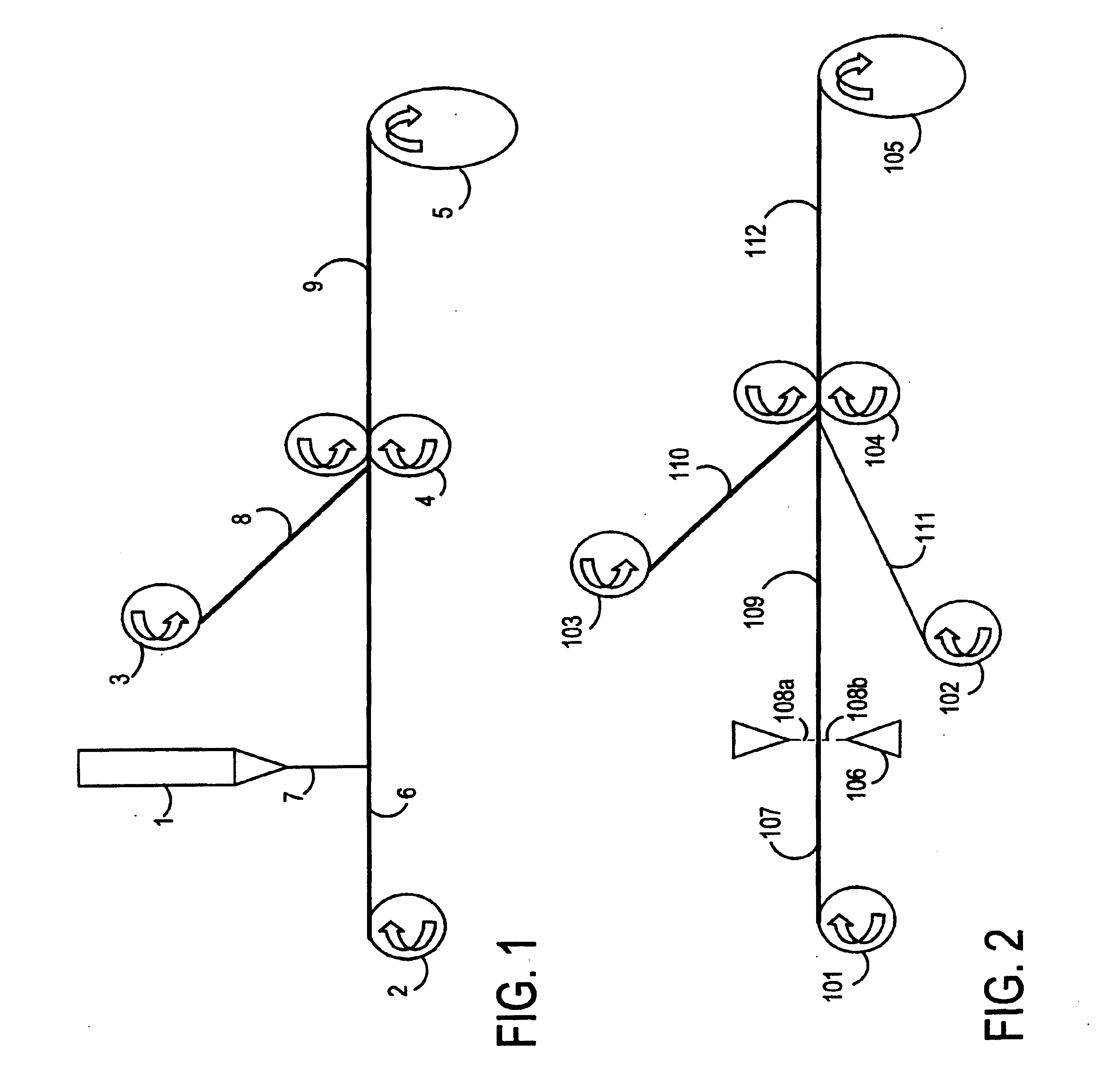Fully elastic nonwoven-film composite
a fully elastic, composite technology, applied in the field of multi-layer composites, can solve the problems of low extension resistance and low recovery force of prestretched layers, and achieve the effect of improving the overall elastic performance of the composite, improving the abrasion resistance and conformity of the nonwoven
- Summary
- Abstract
- Description
- Claims
- Application Information
AI Technical Summary
Benefits of technology
Problems solved by technology
Method used
Image
Examples
example 1
[0057] This material is a elastic nonwoven / elastic film / elastic nonwoven composite produced via adhesive lamination generally in accordance with the method described in FIG. 2. The two elastic nonwoven layers were produced via a bicomponent spunbond process generally in accordance with the method outlined above. The inner first component is a thermoplastic polyurethane (TPU) or a styrene / isoprene / styrene block copolymer (SIS) and the second outer component is a polypropylene. The fiber configuration is sheath / core of varying percentages. The elastic film is a SBS based film of 50 and 90 microns in thickness. The control material is a non-elastic nonwoven / elastic film laminate, a standard in the industry, that has been mechanically activated. In Table 1, “NW” refers to nonwoven, “BW” refers to basis weight, and “CD” refers to cross-machine direction.
TABLE 1Elong.atBW ofFilmFmaxBreakLoad atLoad atPermanentNWNWThicknessCDCD50% CD100% CDSetSampleComposition(gsm)(μm)(N / in)(%)(N / 60 mm)(...
example 2
[0058] Composites that are an elastic nonwoven / elastic film / elastic nonwoven laminate produced via extrusion lamination generally in accordance with the method described in FIG. 1. The two elastic nonwoven layers were produced via a bicomponent spunbond process generally in accordance with the method outlined above. The spunbonded nonwovens are “as spun” and have not been further stretch activated. The inner first component of the bicomponent fibers making up the spunbond nonwovens is a thermoplastic polyurethane (TPU) and the second outer component is a polyethylene. The fiber configuration is sheath / core of 95 / 5 core / sheath ratio. The elastic film is based on a blend of AFFINITY polyolefin plastomers and the thickness is varied in each example, as outlined in Tables 2 and 3. The films of these examples has not been further processed or activated. Another inventive material compared in the Table is an elastic nonwoven / elastic perforated film laminate, that has been adhesively lamin...
PUM
| Property | Measurement | Unit |
|---|---|---|
| particle sizes | aaaaa | aaaaa |
| thickness | aaaaa | aaaaa |
| elongation | aaaaa | aaaaa |
Abstract
Description
Claims
Application Information
 Login to View More
Login to View More - R&D
- Intellectual Property
- Life Sciences
- Materials
- Tech Scout
- Unparalleled Data Quality
- Higher Quality Content
- 60% Fewer Hallucinations
Browse by: Latest US Patents, China's latest patents, Technical Efficacy Thesaurus, Application Domain, Technology Topic, Popular Technical Reports.
© 2025 PatSnap. All rights reserved.Legal|Privacy policy|Modern Slavery Act Transparency Statement|Sitemap|About US| Contact US: help@patsnap.com

